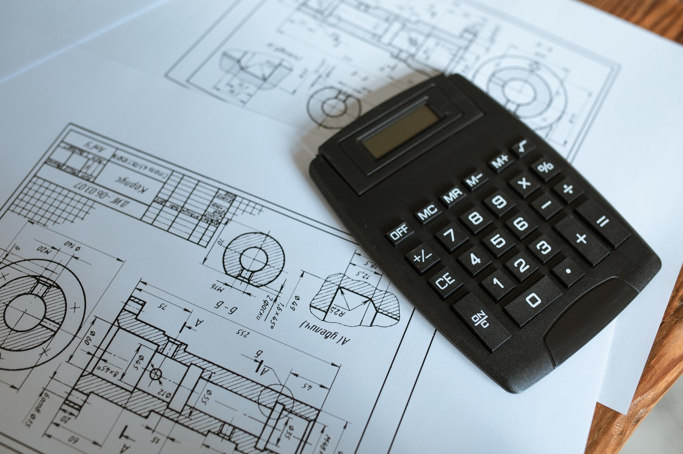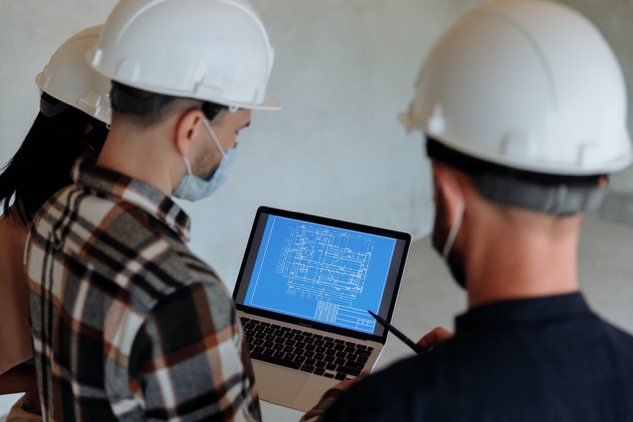Archive for September 2021
Commercial Fire Sprinkler System Design
What is the process of commercial fire sprinkler system design? There are many things that you will take into account when designing a commercial building fire safety system.

(Source)
One essential thing for adding fire protection to any commercial space, whether a retail shop, center, warehouse, office, educational institute, office or an entire building, are fire sprinkler systems. These are the most important equipment for fire safety guidelines that ensure protection in the case of a fire that’s starting to spread. The automatic water discharge from the sprinkler heads (automatic heads) can extinguish the fire before it actually spreads.
Designing a Commercial Fire Sprinkler System
Most of the fire protection plans incorporate a fire sprinkler system as it is a major commercial application to ensure fire resistance. Choosing the right fire sprinkler system is not an easy task. On top of that, if you lack the experience and don’t know about the fire safety standards of the industry, here’s some basic knowledge for you. Although it doesn’t cover overly complex and technical information, you’ll swiftly get an idea of what is necessary during a commercial fire sprinkler design process.
Fire can cause loss of human lives, permanent health injuries, resource loss, asset damage, building, and structural damage, along with many penalties based on poor fire protection measures. Therefore, fire protection remains a top priority of all commercial building owners for their safety.
For employees of a business, it can be difficult to work with peace of mind when there is a risk of fire hazards. Moreover, you can adopt a swift approach and hire the best professionals to design a fire sprinkler system for your commercial space to make them feel safe. Here’s what the design process takes into account.
Fire Systems & Code Compliance
Code compliance is a prerequisite that no professional fire sprinkler designer can ignore. The only thing that differentiates the most effective and functional fire sprinkler systems from the poorly maintained and running ones is code compliance. The NFPA, in addition to the local fire safety rules around your region, will provide the main criteria, instructions, standards, and codes for installing a new fire sprinkler system.
It is the objective of every trustworthy, efficient, and reliable fire sprinkler designer to make sure that their designs and installation suggestions comply with the NFPA and local authority-set rules and standards. By keeping the codes and standards of fire safety in mind, you will maintain a higher fire resistance for your commercial space. According to the codes, regular inspections after proper installations are essential.
Water Supply for the Commercial Fire Sprinkler System
The main concern regarding the application of a fire sprinkler system is water which is necessary to surpass the fire. The sprinkler heads discharge water through the nozzles upon detecting smoke or heat on a certain level. However, it is intermittent to leave the water supply out of the equation. If you plan to adopt a fire sprinkler system, you will have to make sure that you acquire the right water sources. Is it an underground tank that will require pressure pumps for additional water flow consistency? Do you plan to use the nearest municipal water supply? Well, in any case, the water supply will go through the water flow test to make sure that all necessary measures are in place to maintain the pressure during water discharge. In compliance with NFPA 13, a sprinkler system should comprise an automatic water supply.
Choosing the Type of Fire Sprinkler System
Following the adoption of water supply and proper measures, the next step is to determine what kind of fire sprinkler system does the commercial space need? Is the space in a cold area where a dry pipe sprinkler system may prevent water or gas freezing in the pipes? Or is it in an arid or hot urban area where a wet-pipe sprinkler system will ensure effective and quick fire suppression? Your fire sprinkler designer will be able to make the best choice according to your needs.
Determining the Hazard Level & Water Capacity Needed
The team of professional fire sprinkler designers determines how much water will be necessary to control the spread of a fire. This involves the use of conceptual tools, including density/area curves, occupancy hazard, and design area.

(Source)
Layout and Coverage of Fire Sprinkler Heads
Since the design process of sprinkler systems is iterative, there are other calculations involved than those above. The sprinkler coverage and flow rate play a critical role in fire suppression. How much time it takes for a specific amount of water to discharge out of the sprinkler heads will determine how quickly the system can suppress a fire. The professional designers will consider the overall spread of sprinklers over a certain area to ensure maximum efficiency.
Commercial Fire Sprinkler System Design : Conclusion
Fire & Drafting Designs Inc. employs the best resources at its disposal to make sure that every client and their space receive maximum fire safety. In fact, we have the best technicians, engineers, and other helpful workers to deliver the best fire-resistant system for a building or space.
Do you want to ensure that your fire sprinkler system complies with the industry standards and local laws & codes? Well, we aim to make sure that all the fire safety practices are in compliance with the NFPA standards and other necessary regulations.
Call us at (718) 928-3009 to meet with an expert from Fire & Drafting Designs Inc. You can visit our official website and go through the list of fire protection design & drafting services that we offer.
F2M Fire & Drafting Designs Inc.
1231 Lafayette Ave, Fl 2
Bronx, New York, 10474
Reference Links:
https://www.wbdg.org/design-objectives/secure-safe/fire-protection
https://www.qrfs.com/blog/374-the-elements-of-fire-sprinkler-system-design/
https://www.kmbdg.com/news/fire-protection-engineering-2/
https://www.buildings.com/articles/35584/fire-protection-system-design
Brief History of Building Fire Protection in NYC
Want to know a quick history of building fire protection in NYC? Some of the most common imagery we associate with New York City is yellow taxis, subways, and skyscrapers. Not to mention, the fire escape is also a common sight in New York City. When you are moving around in NYC, you will notice fire escapes on almost every building. Fire escapes provide a safe route to exit in case of a fire. Having enough of these escapes means that New York has seen enough fire emergencies in the past.
In the 1800s, European immigrants settled in New York City in search of opportunities. Many of those immigrants started low-paying jobs in the numerous factories that occupied early New York. They started living in notoriously cramped tenements and crowded apartment buildings. Because of overly crowded areas, fire emergencies were a common occurrence.

(Source)
Deadly Fires and Fire Protection
Due to the rise in fire emergencies in New York City, authorities passed a law in 1860 regarding fire protection. The law was passed soon after an incident that took place in a street-level bakery and killed 20 people. According to the law, building construction companies were responsible to build fireproof exits in a building with eight or more families. However, there were numerous challenges in installing a fireproof staircase inside the building. Major challenges included the cost of building interior staircases. Furthermore, it also reduced rental space. Soon authorities released new building codes that allowed landlords to install exterior staircases made with wood or iron.
However, after new regulations, building management didn’t follow the fire safety code and the poor fire safety went on for 50 years. The authorities made building safety precautions mandatory after the death of 146 garment workers at the Triangle Shirtwaist Company. That day, about six hundred workers were locked in a building. The factory only had two exits, but one of those exits was locked by the management to avoid theft. When the fire broke, people weren’t able to escape the building easily.
After this tragic incident, more than 80,000 people protested at Manhattan’s Fifth Avenue. The government passed Sullivan-Hoey Fire Prevention Law in October 1911. This law enforced the installation of fire sprinkler systems through factories and buildings in New York City. The New York City Fire Prevention Bureau was founded after this new law.
In 1927, the government introduced Building Exits Code that made it obligatory for newly constructed buildings to build fireproof interior stairs. The developers started making fire escapes in every building until 1968. After that, factories and residential buildings started installing sprinkler systems as it is one of the most efficient ways to prevent fire damage and save lives.
Top Fire Protection for Residential Buildings in NYC
Here are some safety measures that every residential building in NYC should take:
1. Emergency Evacuation Routes
Every building should have open spaces as it helps take appropriate safety measures. According to Occupational Safety and Health Administration and National Fire Protection Association, it is important to keep windows, doors, and other access clear for entering and leaving the building. This enables residents to easily escape the building, while the fire department can enter inside. Buildings should also include unobstructed fire doors, pathways, windows, stairways, and have other fire hydrant paths.
2. Fire Alarms and Sprinkler System
Fire alarms and sprinkler systems are also important in case of fire emergencies. Fire alarms warn the residents to evacuate the building. On the other hand, a fire sprinkler system controls the fire while the fire department is on the way. Fire alarms and sprinklers contain sensors that immediately sense a fire and protect the building from life-threatening and property-damaging hazards. Furthermore, it is essential to keep these systems 100% functional. Are you looking for a company to design a fire sparkler system? You can get in touch with F2M Fire & Drafting Designs Inc. for the best fire protection system design services in NYC.

(Source)
3. Prevention and Maintenance
It is important for building management to take care of their occupants. They need to inspect the building and take preventive fire measures. They should check fire alarms and sprinkler systems along with improving faulty systems. If you don’t take preventive measures, you have to pay hefty fines for not abiding by the NFPA 72 inspection standards.
4. Fire Protection Companies
This may sound unusual, but you can hire fire protection companies with 24/7 emergency services. These services also fix water supply and fire equipment systems after a leak or malfunction.
History of Building Fire Protection in NYC: Conclusion
At F2M Fire and Drafting Designs Inc., we have professionals and trained technicians with extensive experience. They inspect commercial buildings and create fire sprinkler system designs for platinum level, to code, fire protection.
Call us to discuss your fire protection design project today at (718) 928-3009.
